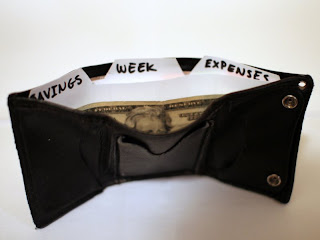If there is a stereotype about actors that is unfortunately true more often than not, it is that they're terrible with money. The good news is: it doesn't have to be that way. You can take control of your finances and its easier than you think. Here's a little primer on setting a weekly budget, and some tricks you can do with cardboard, cash, and a wallet to keep you on point throughout the month.
Determining Your Budget
- On the first of the month look in your bank account, find out how much money you have.
- Pay all of your monthly bills in full.
- Take out as much money as you can stand to for savings (if you're new to this, or living close to the margin start with 10% of your monthly income). Your savings priorities should be:
- 401k up to your employer's match limit (Free money!).
- Paying down high interest credit cards.
- Your emergency fund (enough $ to cover your expenses for 3months)
- Roth IRA up to the maximum deposit amount (this is especially important for actors)
- Personal savings goals (home, car, camera fund, etc)
- Figure out how much money you have left, and subtract an overdraft buffer ($100 - $200 should be okay).
- The amount you have left is your monthly discretionary income.
Determining Your Daily Allowance
- Take your monthly allowance and divide by the number of days in the month. If you've got a monthly budget of $495 in January, this becomes: $495/31 = $15.97
- Round down to the nearest dollar. $15.97 becomes $15
The Weekly Budget Wallet System
This one is easy enough, but you may need to modify this system slightly to fit your personality and spending habits.
- Take your wallet and insert 3 cardboard tabs: Savings, Week, & Expense
- At the start of every week, withdraw 7 times your daily allowance. $15 x 7 = $105 and put it into the "Week" section of your wallet.
- At the start of every day, take your daily allowance from "Week" and put it at the front of your wallet for general use.
- At the end of the day, take any remaining cash and put it in the "Savings" area.
- If you run into an expense that you know you'll have to pay later in the week (like a friend buying a ticket to a show for you), take it out of your daily allowance and put it in the "Expense" area.
The Most Important Part
The single most important rule for a stable financial life is: don't spend any money that you don't have. If you only have $3 left in your day's allowance - sorry, but you're not going out to dinner you're having packet noodles today. If you spend less than your daily allowance on a given day, you'll have extra cash in your savings section which you can spend whenever you like on whatever you like.
Some Things You Might Notice
- You'll make fewer impulse buys. Having to pull cash out of your wallet, and realizing you have a limited amount on a given day makes it harder to spend money on crap you don't really want or need.
- You'll actually start preparing meals at home instead of thinking you should.
- You'll recognize just how much money you're spending on cigarettes, an astounding cessation aide.
Traps
- Gas & Groceries: If you know you buy a tank a week, and spend $50 on groceries, reduce your daily allowance and put enough money for gas and groceries in your "Expenses" section. Also, the earlier in the week you buy your groceries the more money you'll save on eating out.
 |
| Get a wallet as bitchin' as your new budget will be. Note: Bitchin' is in the eye of the beholder. |
 |
| Put a sticker on your ATM card to remind yourself that it is to be used to withdraw cash only. This is to keep you from accidentally busting your budget. |
 |
| Your day's spending cash should be in the front-most compartment of your wallet. |
 |
| This is where you keep cash that you know is owed to somebody else. Be that the City of LA for a parking ticket you just discovered, or your friend who bought tickets to the concert on Friday. |


No comments:
Post a Comment